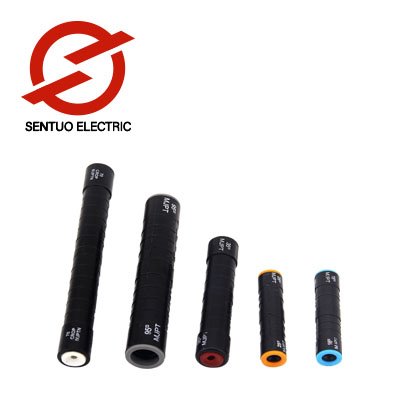Unveiling the Core: Material Composition of Pre-Insulated Joint Sleeves and Its Impact on Electrical Insulation
2024-01-22
Introduction:
In the intricate realm of electrical systems, the significance of insulation cannot be overstated. Pre-Insulated Joint Sleeves emerge as crucial components designed to provide a protective barrier for joints and connections. This blog post aims to unveil the core of these sleeves by exploring their material composition and understanding how it contributes to their exceptional insulation properties.
1. Polymeric Powerhouse:
- Base Material: The primary material constituting Pre-Insulated Joint Sleeves is often a polymeric compound, such as cross-linked polyethylene (XLPE) or ethylene propylene diene monomer (EPDM).
- Insulation Role: The polymeric base serves as the powerhouse of insulation, offering excellent dielectric properties essential for preventing electrical leakage and ensuring the integrity of connections.
2. Cross-Linked Polyethylene (XLPE):
- Robust Insulator: XLPE is a prevalent choice due to its robust insulating capabilities. It undergoes a cross-linking process, enhancing its thermal and mechanical properties.
- Thermal Stability: The cross-linking imparts thermal stability, allowing Pre-Insulated Joint Sleeves to withstand high temperatures without compromising their insulation performance.
3. Ethylene Propylene Diene Monomer (EPDM):
- Versatile Insulation: EPDM is another polymeric option known for its versatility. It exhibits resilience against environmental factors such as moisture, chemicals, and UV radiation.
- Outdoor Durability: EPDM's weather-resistant properties make it suitable for outdoor applications, providing long-lasting insulation in diverse environmental conditions.
4. High Dielectric Strength:
- Electrical Barrier: The material composition is chosen to possess high dielectric strength, creating an effective barrier against electrical conductivity. This is crucial for preventing short circuits and maintaining the electrical integrity of joints.
5. Moisture Resistance:
- Hydrophobic Nature: The material's hydrophobic nature, whether XLPE or EPDM, contributes to moisture resistance. This is pivotal in preventing water ingress, which can compromise insulation and lead to electrical faults.
6. Chemical Resistance:
- Guarding Against Corrosion: The material composition is selected to resist chemicals and corrosive substances. This resistance ensures that Pre-Insulated Joint Sleeves remain effective in environments with potential exposure to corrosive elements.
7. Flexibility and Conformity:
- Adaptability: The polymeric material is engineered to be flexible and conformable. This allows Pre-Insulated Joint Sleeves to adapt to the contours of cables, joints, and connectors, ensuring a snug fit for complete insulation coverage.
8. Low Smoke and Toxicity (LSZH) Options:
- Safety Considerations: In some applications, Low Smoke Zero Halogen (LSZH) materials may be used. These materials reduce the emission of smoke and toxic gases in the event of a fire, aligning with safety standards and regulations.
9. UV Resistance for Outdoor Applications:
- Sunlight Endurance: For outdoor installations, the material composition includes UV-resistant properties. This ensures that Pre-Insulated Joint Sleeves maintain their structural and insulating integrity even when exposed to prolonged sunlight.
10. Long-Term Reliability:
- Stability Over Time: The selected materials are chosen for their stability and durability over time. This contributes to the long-term reliability of Pre-Insulated Joint Sleeves, offering sustained insulation performance throughout their lifespan.
Conclusion:
The material composition of Pre-Insulated Joint Sleeves is a carefully crafted amalgamation of polymeric elements, each chosen for its unique properties. Whether it's the robust insulation of XLPE, the versatility of EPDM, or the safety considerations of LSZH options, these materials work in harmony to create a protective fortress around electrical joints. As we unveil the core of these sleeves, we gain a deeper appreciation for the role played by material composition in ensuring reliable insulation that withstands the challenges of diverse electrical environments.



